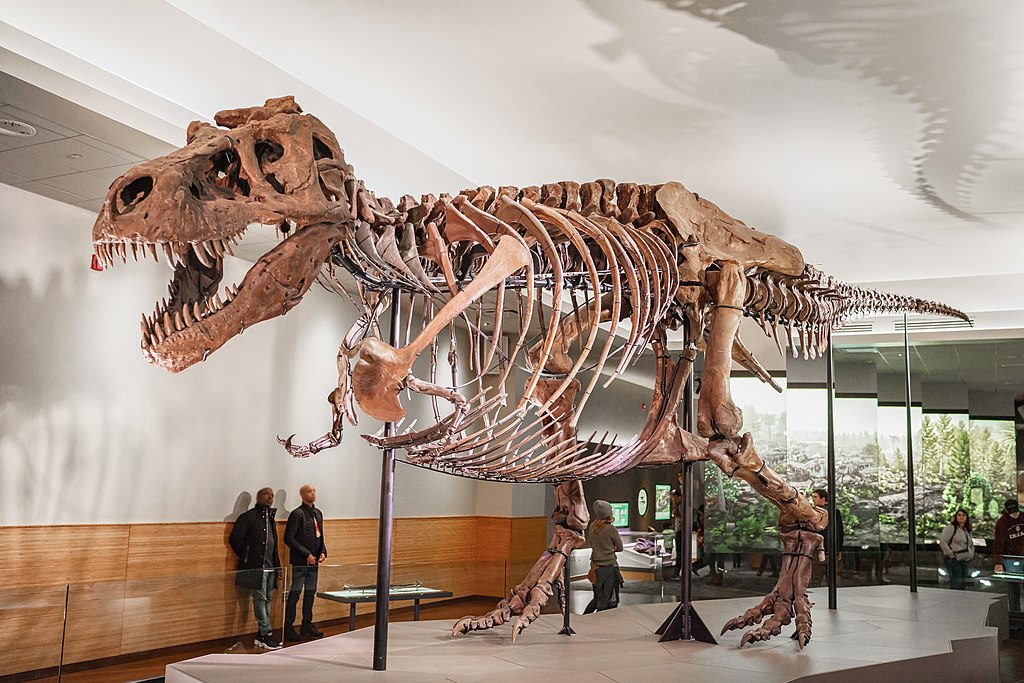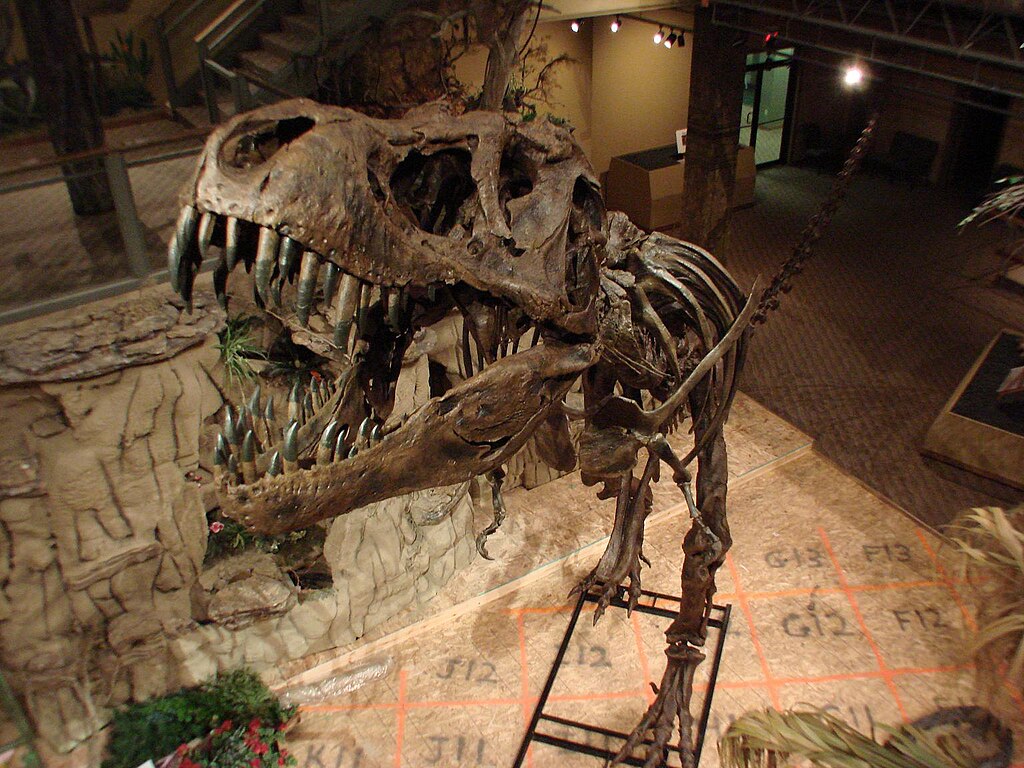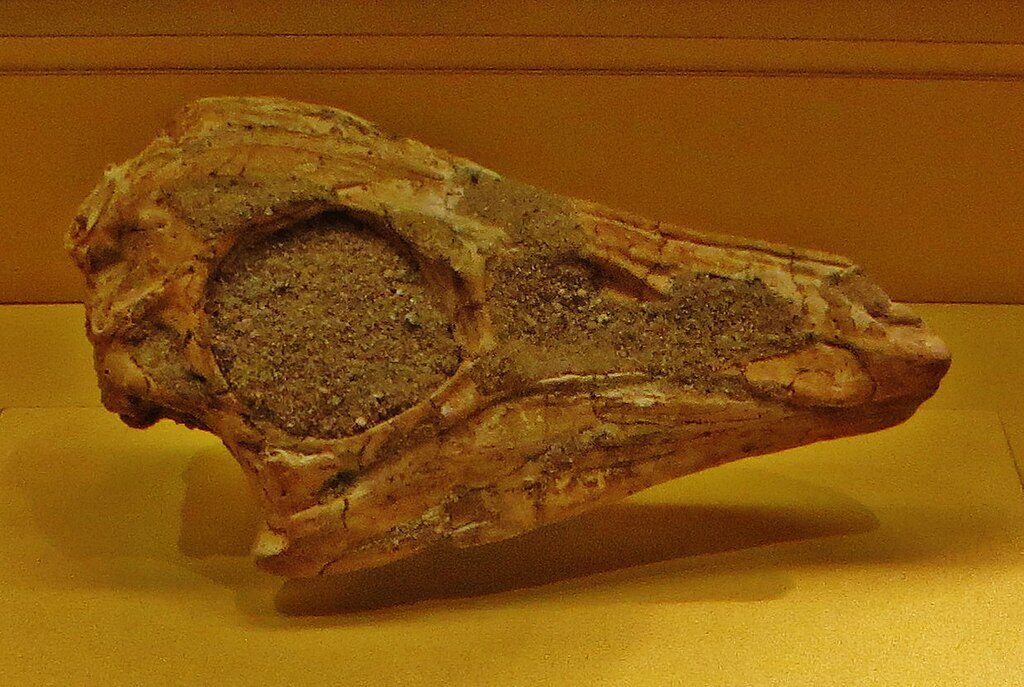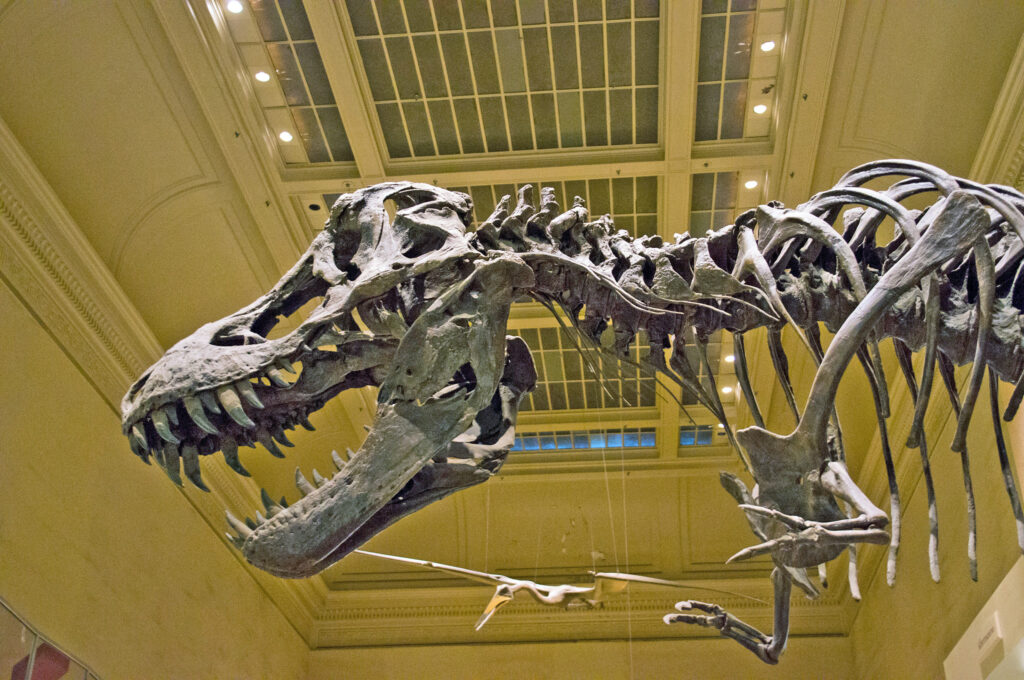In the world of paleontology, a groundbreaking discovery has challenged long-held beliefs about fossil preservation. Scientists examining a Tyrannosaurus rex femur unearthed in Montana found something extraordinary: soft tissue that had somehow survived for over 65 million years. This remarkable find included blood vessels, cells, and protein fragments that should have decomposed millennia ago. The implications of this discovery extend far beyond mere scientific curiosity—they’re reshaping our understanding of fossilization processes, dinosaur physiology, and even the evolutionary connections between prehistoric creatures and modern animals. This unprecedented preservation opens new windows into the distant past and provides tangible links to creatures that roamed Earth long before humans existed.
The Remarkable Discovery That Shocked Paleontologists

In 2005, Dr. Mary Schweitzer and her team at North Carolina State University made a discovery that sent shockwaves through the scientific community. While examining a 68-million-year-old T. rex thigh bone that had been broken during excavation, they noticed unusual tissue structures that appeared remarkably preserved. After dissolving the mineral component of the fossil with a weak acid solution—a standard procedure in paleontological research—the team was astonished to find flexible, transparent blood vessels that retained their elasticity. Even more surprisingly, these vessels contained what appeared to be red blood cells with preserved nuclei and other cellular structures. This discovery directly contradicted the conventional wisdom that soft tissues could not survive the fossilization process over such vast timescales, forcing scientists to reconsider fundamental assumptions about how fossils form and what information they might contain.
Challenging the Traditional Understanding of Fossilization

For generations, paleontologists operated under the assumption that fossilization completely replaced all organic material with minerals, leaving no original biological tissue behind. The process was thought to work like this: as an organism is buried, minerals from surrounding sediment gradually infiltrate and replace organic tissues, creating a stone replica of the original bone. Any soft tissues like blood vessels, muscle, or skin were presumed to decompose rapidly after death, leaving no trace in the fossil record. Schweitzer’s discovery fundamentally challenged this model, suggesting that under certain exceptional circumstances, original biological materials could somehow persist for tens of millions of years. This paradigm shift has prompted researchers to reexamine countless museum specimens that might contain overlooked organic remnants, potentially harboring valuable biological data about extinct species.
Verification and Skepticism in the Scientific Community

As with any revolutionary scientific claim, Schweitzer’s discovery initially met with significant skepticism. Critics suggested various alternative explanations: perhaps the samples were contaminated with modern bacterial biofilms that mimicked blood vessel structures, or maybe the materials were the result of more recent biological infiltration of the fossil. These challenges prompted Schweitzer and colleagues to conduct additional rigorous analyses to verify their findings. They used multiple independent techniques, including immunological tests that showed the preserved proteins reacted with antibodies designed to detect collagen—a result that would be impossible if the material wasn’t genuine dinosaur tissue. Mass spectrometry analysis further confirmed the presence of protein sequences consistent with ancient collagen rather than bacterial contamination. After years of follow-up research and independent verification by other laboratories, most experts now accept that these are indeed preserved dinosaur tissues, though debate continues about exactly how such preservation occurred.
The Mechanism Behind Extraordinary Preservation

How could delicate biological structures possibly survive for 68 million years? This question has driven fascinating research into novel preservation mechanisms. One leading hypothesis suggests that iron played a crucial role in this exceptional preservation. When an organism dies, iron released from hemoglobin in its blood can trigger chemical reactions that essentially “fix” tissues, similar to how formaldehyde works in modern laboratory preservation. This process, called iron-catalyzed preservation, may create highly stable cross-links between proteins, effectively preventing their degradation even over geological timescales. Another theory proposes that certain minerals might rapidly infiltrate and stabilize tissues before decomposition can occur, creating a microscopic mineral scaffold that protects biological structures. Some researchers have suggested that the original tissues might be preserved through the formation of advanced glycation end products (AGEs)—stable compounds created when sugars react with protein, which are notoriously resistant to degradation.
What the Blood Vessels Reveal About Dinosaur Physiology

The preserved blood vessels and cells provide unprecedented insights into dinosaur biology that fossilized bones alone cannot reveal. Microscopic examination of these vessels shows striking similarities to those found in modern birds—T. rex’s closest living relatives—supporting the evolutionary connection between dinosaurs and avian species. The structure of the blood vessels suggests a sophisticated circulatory system capable of supporting high metabolic rates, adding weight to theories that many dinosaurs were warm-blooded, active creatures rather than the cold, sluggish reptiles depicted in older reconstructions. The presence of medullary tissue—a type of bone tissue found in female birds during egg-laying—in some specimens has even allowed researchers to identify the sex of certain dinosaur fossils. These soft tissues provide direct evidence of physiological adaptations that were previously inferred only indirectly from bone structure or comparative anatomy with modern animals.
Extracting Ancient Proteins and Their Significance

Perhaps the most scientifically valuable aspect of these preserved tissues is the presence of ancient protein fragments that have survived alongside the visible structures. Using sophisticated mass spectrometry techniques, researchers have identified sequences of amino acids from proteins like collagen, hemoglobin, and elastin in these dinosaur remains. These protein sequences serve as a molecular fossil record, providing information about dinosaur biochemistry and metabolism that was previously thought to be unretrievable. When compared with proteins from modern animals, these ancient sequences help clarify evolutionary relationships with unprecedented precision. For instance, analysis of collagen fragments from T. rex showed they were most similar to those of modern birds, followed by alligators and crocodiles—exactly what evolutionary theory would predict based on other evidence. This molecular data provides an entirely new line of evidence for reconstructing the dinosaur family tree, complementing traditional fossil morphology studies.
The DNA Question: Could Jurassic Park Become Reality?

Whenever preserved dinosaur tissues are discussed, the inevitable question arises: could we extract dinosaur DNA and potentially resurrect extinct species? Despite the popular imagination fueled by “Jurassic Park,” the scientific reality remains far more constrained. DNA is significantly more fragile than proteins, with most studies suggesting it degrades beyond recovery within approximately one million years under even ideal conditions, far short of the 65+ million years since dinosaurs roamed the Earth. While some researchers have claimed to identify potential DNA fragments in dinosaur specimens, these results remain highly contested in the scientific community due to the high risk of contamination and the difficulty of distinguishing genuine ancient DNA from modern sources. Even if microscopic fragments of dinosaur DNA were eventually verified, they would represent only tiny portions of the complete genome needed for any theoretical resurrection attempt. For now, at least, non-avian dinosaurs will remain firmly in the prehistoric past rather than contemporary zoological gardens.
Similar Discoveries in Other Fossil Specimens

Since Schweitzer’s groundbreaking work with T. rex, similar soft tissue preservation has been documented in numerous other ancient specimens, suggesting this phenomenon may be more common than previously thought. Researchers have identified preserved blood vessels, cells, and protein remnants in a duck-billed dinosaur (Brachylophosaurus canadensis) dating back 80 million years, as well as in a 190-million-year-old Lufengosaurus from China. Perhaps most remarkably, scientists reported finding red blood cells and collagen fibers in 75-million-year-old fossils of marine reptiles called mosasaurs and in a 195-million-year-old Jurassic ichthyosaur. These discoveries span different taxonomic groups, geological periods, and preservation environments, suggesting that soft tissue preservation might occur under a variety of conditions rather than requiring extremely rare circumstances. As detection techniques improve and more researchers specifically look for such materials, reports of ancient soft tissue findings continue to increase across paleontological collections worldwide.
Implications for Dating Techniques and Geological Timescales

The discovery of preserved biological materials in dinosaur fossils has sparked debate about the reliability of conventional dating methods and established geological timescales. Some researchers, particularly those aligned with young-Earth creationist viewpoints, have suggested that such preservation is incompatible with fossils being tens of millions of years old, arguing instead for a much younger age of these specimens. However, mainstream paleontologists point out that multiple independent dating methods—including radiometric dating of the surrounding rock layers, magnetostratigraphy, and biostratigraphy—consistently place these fossils within the Late Cretaceous period, approximately 68 million years ago. Rather than challenging established chronologies, most scientists interpret these findings as evidence that our understanding of fossilization and tissue preservation needs refinement. The discovery demonstrates that under certain conditions, some biological materials can persist far longer than previously thought possible, but it does not fundamentally alter the well-established timeline of Earth’s history derived from multiple converging lines of evidence.
New Technologies Enabling Better Detection and Analysis

Advances in analytical technologies have been crucial in both discovering preserved tissues and verifying their authenticity. Scanning electron microscopy allows researchers to examine the microstructure of fossil materials at extremely high magnification, revealing cellular details invisible to earlier generations of paleontologists. Synchrotron-based techniques, which use powerful X-rays generated by particle accelerators, can identify chemical signatures characteristic of specific biological compounds without destroying precious samples. Mass spectrometry has become increasingly sensitive, capable of detecting and sequencing protein fragments from minuscule samples and distinguishing ancient biomolecules from modern contaminants. Immunological methods using antibodies that bind specifically to certain proteins provide another verification approach, as demonstrated when antibodies designed to detect modern bird collagen successfully identified similar proteins in dinosaur specimens. These technological advances not only make the detection of preserved tissues possible but also provide multiple independent methods of authentication, strengthening scientific confidence in these extraordinary findings.
The Connection Between Dinosaurs and Modern Birds

The preserved blood vessels and cellular structures found in dinosaur bones provide compelling molecular evidence supporting the evolutionary link between dinosaurs and modern birds. When researchers compared protein sequences extracted from T. rex collagen with those from various living animals, they found the closest match was with birds, followed by crocodiles and alligators—precisely the pattern predicted by evolutionary theory based on anatomical evidence. This molecular confirmation strengthens what paleontologists had previously concluded from skeletal features: birds are the direct descendants of theropod dinosaurs, the group that includes Velociraptor and Tyrannosaurus. Beyond protein similarities, the microscopic structure of blood vessels in dinosaur fossils shows striking resemblances to those in modern birds, with distinctive branching patterns and wall compositions not found in other reptiles. These biochemical and histological connections provide a tangible bridge across 65 million years of evolution, allowing scientists to understand in greater detail how modern birds inherited specific physiological traits from their dinosaurian ancestors.
Ethical Considerations and Scientific Responsibilities

The discovery of preserved dinosaur tissues raises important ethical questions about how such rare specimens should be handled, studied, and potentially consumed during analysis. Traditional paleontological techniques often involve destructive sampling—cutting, grinding, or dissolving portions of fossils to study their internal structure or chemical composition. With the realization that some fossils contain irreplaceable biological information, researchers must carefully balance the potential scientific gain against the permanent loss of material that might be analyzed with more advanced techniques in the future. Institutional policies are evolving to address these concerns, with many museums now requiring detailed justification before approving destructive sampling of important specimens. Additionally, the high-profile nature of these discoveries necessitates rigorous scientific standards to prevent sensationalism or misinterpretation. Researchers must be transparent about methodologies, acknowledge limitations, and distinguish between facts and speculative hypotheses, particularly given how findings about dinosaur DNA or proteins can be misrepresented in popular media and potentially misused to challenge established scientific frameworks like evolutionary theory.
Future Directions in Ancient Tissue Research

The field of ancient tissue research stands at an exciting frontier, with numerous promising directions for future investigation. One priority is developing less destructive methods for detecting and analyzing preserved biomolecules, potentially using advanced imaging techniques that can identify chemical signatures without physically sampling the specimen. Researchers are also working to better understand the environmental and chemical conditions that enable exceptional preservation, which could help identify promising fossil sites and specimens most likely to yield preserved tissues. The application of ancient protein analysis (paleoproteomics) is expanding rapidly, with scientists hoping to extract additional proteins beyond collagen that might provide insights into dinosaur metabolism, immune systems, and other physiological processes. Some researchers are exploring whether preserved pigment structures might allow more accurate determination of dinosaur coloration and patterning. Perhaps most ambitiously, teams are investigating whether preserved cellular structures might contain retrievable epigenetic information—chemical modifications to the genome that affect gene expression, which could provide insights into dinosaur development and physiology even in the absence of recoverable DNA sequences.
Rewriting the Textbooks on Fossilization

The discovery of preserved blood vessels and other soft tissues in dinosaur bones has necessitated a fundamental rewriting of paleontological textbooks regarding the process and potential of fossilization. Traditional models described fossilization as a process where all original organic material is replaced by minerals, creating a stone replica with no biological components remaining. This new evidence reveals a more complex reality where fossilization exists on a spectrum, with some specimens retaining remarkable amounts of original biological material under specific conditions. Geology and paleontology curricula are being updated to incorporate these findings, teaching students about potential preservation mechanisms like iron-catalyzed fixation and the possibility of recovering molecular information from even very ancient specimens. This paradigm shift extends beyond academic interest—it affects how field paleontologists collect and initially process specimens, encouraging techniques that minimize exposure to conditions that might degrade preserved biomolecules. The recognition that fossils may contain more than just morphological information has transformed them from static stone replicas into potential repositories of biological data waiting to be uncovered with appropriate analytical techniques.
Conclusion

The discovery of preserved blood vessels in dinosaur bones represents one of the most significant paleontological breakthroughs of the 21st century. It has transformed our understanding of fossilization processes, opened new windows into dinosaur physiology, and provided molecular evidence connecting prehistoric reptiles to modern birds. While we’re not on the verge of creating Jurassic Park—DNA remains elusive at such time depths—these findings allow unprecedented insights into creatures that vanished millions of years ago. As analytical technologies continue to advance, we can expect further revelations from these remarkable specimens, perhaps including details about dinosaur metabolism, growth patterns, and physiological adaptations previously thought lost to time. More than just scientific curiosities, these preserved tissues provide tangible connections to Earth’s distant past, allowing us to reach across millions of years and touch, however indirectly, the biological reality of the magnificent creatures that once dominated our planet.




